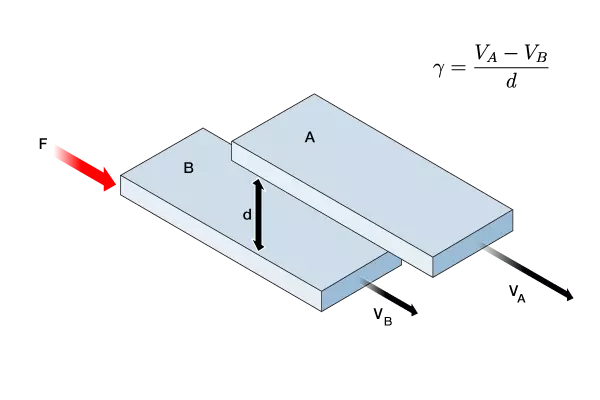Viscosity, Shear Stress, and Shear Rate
An examination of the Reynolds Number tells us that two of the most important properties in determining a fluid’s flow behavior are density ![]() and viscosity (μ), where density is the ratio of mass to volume and viscosity is the ratio of shear stress
and viscosity (μ), where density is the ratio of mass to volume and viscosity is the ratio of shear stress ![]() to shear rate
to shear rate ![]() :
:
![]() (1)
(1)
This relationship between shear stress and shear rate applies to all fluid flow. The concepts of shear rate and shear stress can be represented in terms of two fluid layers (A and B) moving past each other when a force (F) has been applied (Figure 1).

The shear stress is the frictional force that resists flow of the moving fluid layers past each other, while the shear rate is the rate at which one layer is moving past the other. The shear rate is therefore a velocity gradient equal to:
![]() (2)
(2)
 Petro Shine The Place for Oil and Gas Professionals.
Petro Shine The Place for Oil and Gas Professionals.



